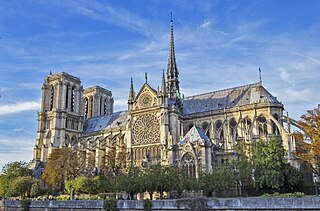
Notre-Dame de Paris, often referred to simply as Notre-Dame, is a medieval Catholic cathedral on the Île de la Cité, in the 4th arrondissement of Paris, France. The cathedral, dedicated to the Virgin Mary, is considered one of the finest examples of French Gothic architecture. Several attributes set it apart from the earlier Romanesque style, particularly its pioneering use of the rib vault and flying buttress, its enormous and colourful rose windows, and the naturalism and abundance of its sculptural decoration. Notre-Dame also stands out for its three pipe organs and its immense church bells.
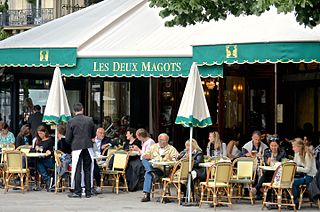
The 6th arrondissement of Paris is one of the 20 arrondissements of the capital city of France. In spoken French, it is referred to as le sixième.
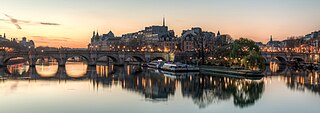
Île de la Cité is an island in the river Seine in the center of Paris. In the 4th century, it was the site of the fortress of the area governor for the Roman Empire. In 508, Clovis I, the first King of the Franks, established his palace on the island. In the 12th century, it became an important religious center, the home of Notre-Dame cathedral, and the royal chapel of Sainte-Chapelle, as well as the city hospital, the Hôtel-Dieu. It is also the site of the city's oldest surviving bridge, the Pont Neuf.
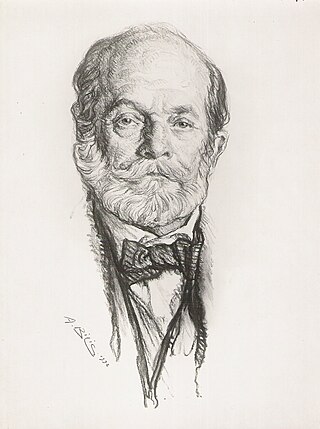
Auguste Perret was a French architect and a pioneer of the architectural use of reinforced concrete. His major works include the Théâtre des Champs-Élysées, the first Art Deco building in Paris; the Church of Notre-Dame du Raincy (1922–23); the Mobilier National in Paris (1937); and the French Economic, Social and Environmental Council building in Paris (1937–39). After World War II he designed a group of buildings in the centre of the port city of Le Havre, including St. Joseph's Church, Le Havre, to replace buildings destroyed by bombing during World War II. His reconstruction of the city is now a World Heritage Site for its exceptional urban planning and architecture.

Lutetia, also known as Lutecia and Lutetia Parisiorum, was a Gallo–Roman town and the predecessor of modern-day Paris. Traces of an earlier Neolithic settlement have been found nearby, and a larger settlement was established around the middle of the third century BCE by the Parisii, a Gallic tribe. The site was an important crossing point of the Seine, the intersection of land and water trade routes.

Aubervilliers is a commune in the Seine-Saint-Denis department, Île-de-France region, northeastern suburbs of Paris, France.
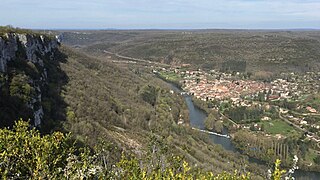
Saint-Antonin-Noble-Val is a commune in the Tarn-et-Garonne department in the Occitanie region in southern France.

Old Montreal is a historic neighbourhood within the municipality of Montreal in the province of Quebec, Canada. Home to the Old Port of Montreal, the neighbourhood is bordered on the west by McGill Street, on the north by Ruelle des Fortifications, on the east by rue Saint-André, and on the south by the Saint Lawrence River. Following recent amendments, the neighbourhood has expanded to include the Rue des Soeurs Grises in the west, Saint Antoine Street in the north, and Saint Hubert Street in the east.

The Rue de la Harpe is a street in Paris' Latin Quarter. Relatively calm and cobblestoned along much of its length, it runs in a south-easterly direction between the Rue de la Huchette and the Rue Saint-Séverin, where it turns south-west to where it ends at the Boulevard Saint-Germain. It is a largely residential street; it is graced through its odd numbers with a few buildings dating from the Louis XV period, but buildings along the opposite side of the street are most all of a 'Haussmannian' style of a more recent stature. Its street-front commerces are varied to its southern end, but tend towards restaurants and the tourism trade towards the river. It appeared in the 19th-century magazine, The Tell Tale, as the site of the murders which may have been the origin of the Sweeney Todd story.
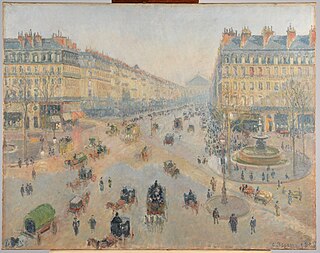
Haussmann's renovation of Paris was a vast public works programme commissioned by French Emperor Napoleon III and directed by his prefect of the Seine, Georges-Eugène Haussmann, between 1853 and 1870. It included the demolition of medieval neighbourhoods that were deemed overcrowded and unhealthy by officials at the time, the building of wide avenues, new parks and squares, the annexation of the suburbs surrounding Paris, and the construction of new sewers, fountains and aqueducts. Haussmann's work was met with fierce opposition, and he was dismissed by Napoleon III in 1870. Work on his projects continued until 1927. The street plan and distinctive appearance of the centre of Paris today are largely the result of Haussmann's renovation.

The Rue Saint-Honoré is a street in the 1st arrondissement of Paris, France. It is named after the collegial Saint-Honoré church, situated in ancient times within the cloisters of Saint-Honoré.
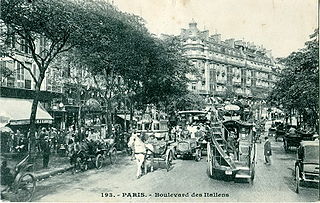
The Boulevard des Italiens is a boulevard in Paris. It is one of the 'Grands Boulevards' in Paris, a chain of boulevards built through the former course of the Wall of Charles V and the Louis XIII Wall, which were destroyed by the orders of Louis XIV. The origin of the name is the théâtre des Italiens built on it in 1783, shortly before the French Revolution on the site now occupied by the third Salle Favart.

The Théâtre de la Huchette is a theatre in Paris.

The Parvis Notre-Dame – Place Jean-Paul II is a city square in Paris, France. Located in the city's 4th arrondissement on the eastern half of the Île de la Cité, the square is bordered by the Hôtel-Dieu hospital to the north, the cathedral of Notre-Dame to the east, the Seine River to the south, and the Prefecture of Police headquarters to the west. The square contains France's point zéro marker, making it the very center of Paris for the purpose of measuring travel distance. Other points of interest include the Archaeological Crypt of the Île de la Cité and Charlemagne et ses Leudes, an equestrian statue of Charlemagne.

Notre-Dame des Blancs-Manteaux is a Roman Catholic parish church at 12 Rue des Blancs-Manteaux in Le Marais, in the 4th arrondissement of Paris. It takes its name from the "Les Blancs-Manteaux", for the cloaks worn by the mendicant Augustinian Order of Servites, who founded the first church 1258. It was rebuilt between 1685 and 1689 in the French Baroque or French neoclassical style. It is noted for its remarkable carved wood pulpit (1749) and its collection of paintings and sculpture.

The Rue Saint-Lazare is a street in the 8th and 9th arrondissements of Paris, France. It starts at 9 Rue Bourdaloue and 1 Rue Notre-Dame-de-Lorette, and ends at Place Gabriel-Péri and Rue de Rome.
This article presents the main landmarks in the city of Paris within administrative limits, divided by its 20 arrondissements. Landmarks located in the suburbs of Paris, outside of its administrative limits, while within the metropolitan area are not included in this article.
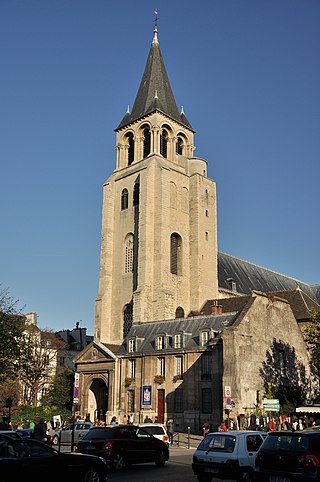
The city of Paris has notable examples of architecture of every period, from the Middle Ages to the 21st century. It was the birthplace of the Gothic style, and has important monuments of the French Renaissance, Classical revival, the Flamboyant style of the reign of Napoleon III, the Belle Époque, and the Art Nouveau style. The great Exposition Universelle (1889) and 1900 added Paris landmarks, including the Eiffel Tower and Grand Palais. In the 20th century, the Art Deco style of architecture first appeared in Paris, and Paris architects also influenced the postmodern architecture of the second half of the century.
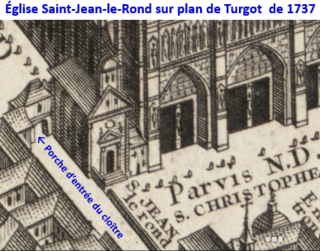
The Church of Saint-Jean-le-Rond, Paris was a small church originally attached to the north side of the Cathedral of Notre-Dame de Paris near the west front, and close to the entrance of the cloister. It was built earlier than Notre-Dame, at about the same time as the church which preceded Notre-Dame, the Cathedral of Saint-Etienne. It was dedicated to John the Baptist, and was used primarily as a baptistry. It survived centuries longer than the Cathedral of Saint Etienne, but was finally demolished in the early 18th century to make room for a new street, the rue du Cloître-Notre-Dame.



















